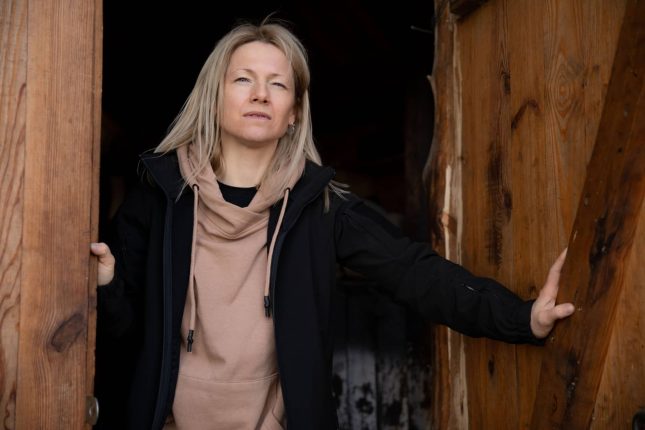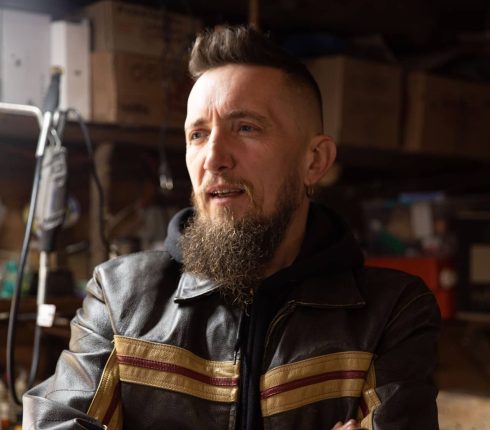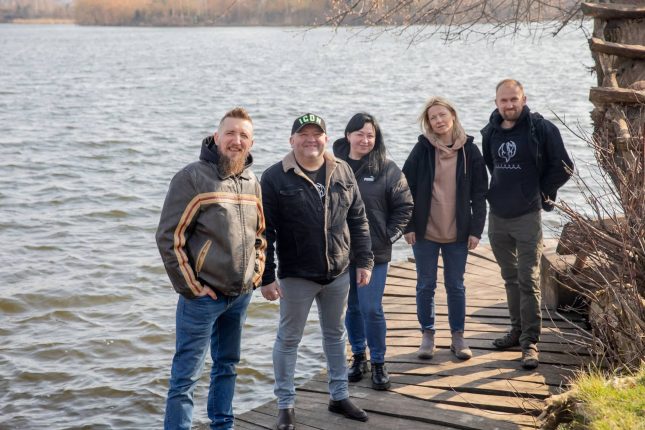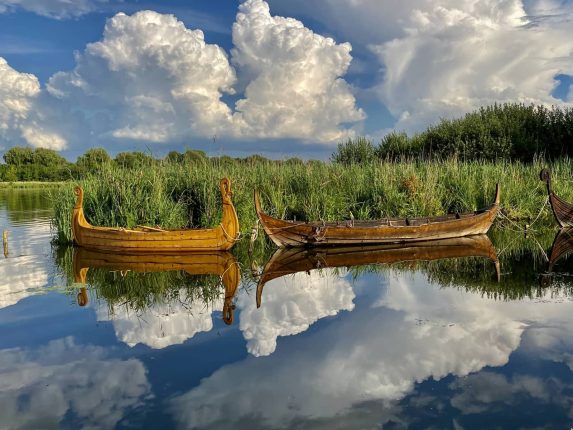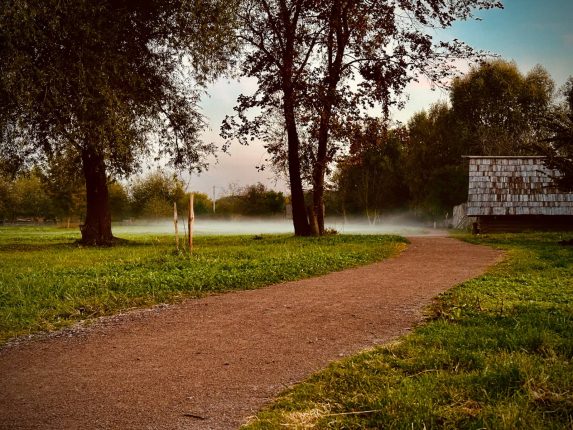
Celebrating traditional Ukrainian cultural identity in Rivne
02/04/2024
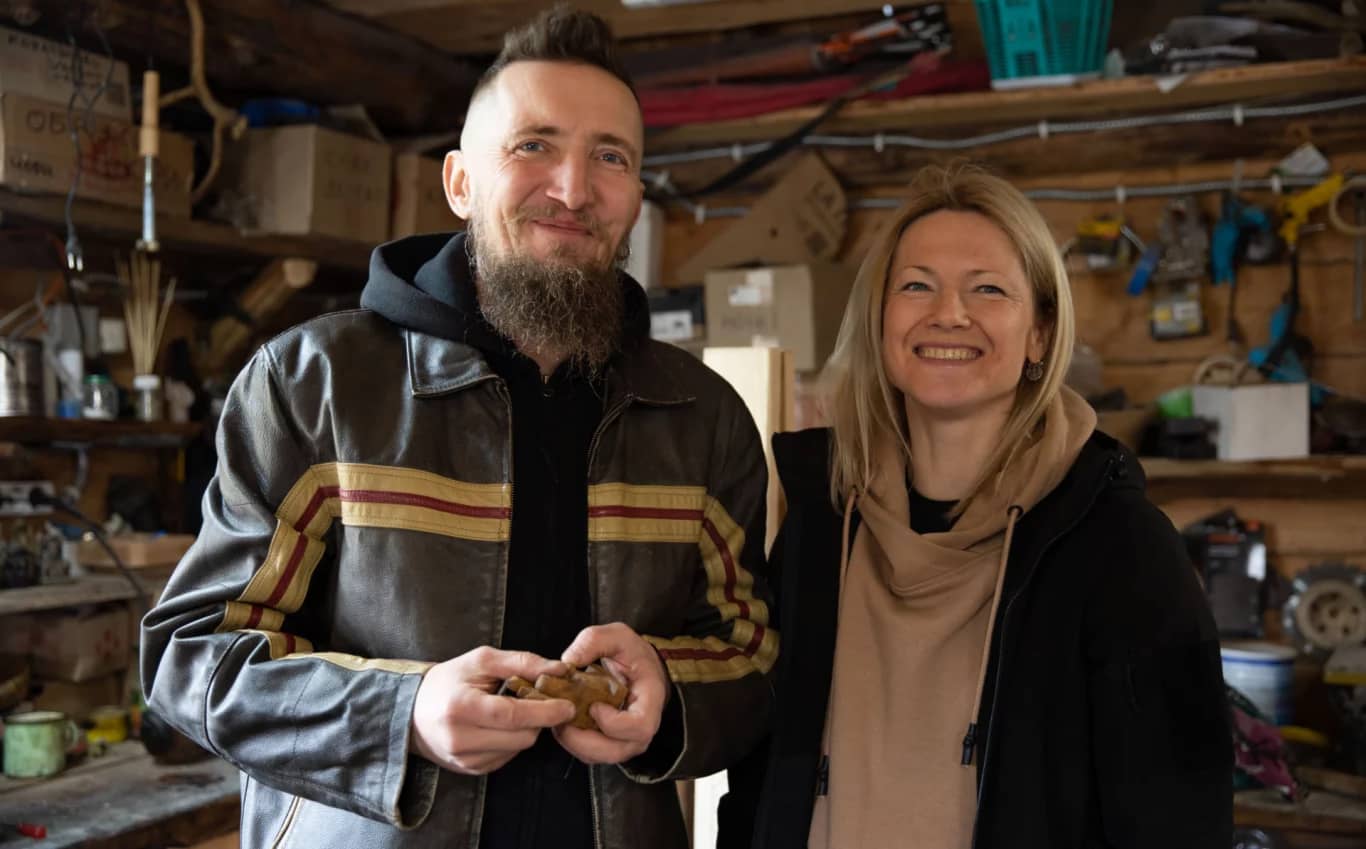
In the city of Rivne in western Ukraine, the European Union is supporting a historical reconstruction park, Ostvytsya, creating an interactive quest for visitors to immerse themselves in the life of medieval Kyivan Rus’.
The initiative began in 2018 with the recreation of a traditional wooden boat to highlight the cultural history of Ukraine. Journalists and local communities gathered to witness and celebrate the physical recreation of their traditions and national identity represented by the vessel, whose production was coordinated by a team of three people. They had a vision for a park, which would house such boats and feature activities, as well as elements showcasing the life of the region during the 9th-12thcenturies.
The importance of reviving Ukraine’s cultural history
After receiving public funding to develop the Ostvytsya Park in 2019, the team started revitalising two hectares of abandoned land near the archaeological site of an ancient hillfort. “Maybe, around one per cent of the Rivne population knew about this place before,” says Olha Postnikova, one of the initiators of the project. “We started developing the park with the aim of showcasing the lives of people from that time of history, their traditions of craftsmanship, and architecture linking to the archaeological monument,” she says, “to demonstrate that Ukraine’s history does not start with the Cossacks but is deeply rooted in the period of the Kyivan Rus’.”
Yurii Oytcus, co-founder of Ostvytsya Park, emphasises the importance of this endeavour, stating, “Russia wants to appropriate our history, it wants to appropriate the word ‘Rus’ by twisting facts to argue that Ukraine is a part of Russia, whereas in reality, our culture originates from Kyiv.”
Immersive folklore and history
Families and tourists regularly visit the Park from Rivne, other Ukrainian cities, and abroad. They participate in workshops, enjoy traditional Ukrainian cuisine, go on boat rides on the Basiv Kut lake, and participate in archery lessons. “The Ostvytsya reconstruction park has become a major attraction for locals as well as city visitors,” says Olha. “Before the project, Rivne did not have many such places.”
All the activities on the site are especially tailored for school-aged children who learn about the history of Ukraine by seeing and experiencing it. “It is much easier for children to get this information on the country’s history, compared to a schoolbook,” Olha explains, “they are involved in the process themselves.”
In addition to the cheerful sounds of children and their families, bleats and quacks of goats and ducks bring a pleasing sense of countryside to the Ostvytsya Park territory. They wander around the green shore of the Basiv Kut lake surrounded with wooden fences, workshops, tents, and other reconstructions of medieval structures.
EU-supported cultural project at Ostvytsya Park
Ostvytsya Park has now received a grant under the EU4Culture programme’s Cultural and Cross-Innovation Projects. Its project is one of the 20 currently being implemented in Eastern Partnership countries with the support of the EU. In Ukraine alone, four creative initiatives are currently being implemented in Odesa, Rivne, Vinnytsia, and Ivano-Frankyvsk.
In the case of the Ostvytsya Park, the project funded by EU4Culture is connected to Rivne’s aim of generating and implementing innovative ideas within the city. The team behind the project is now developing a quest with a primary focus on school-aged children. They are now planning out scenarios with four people acting the parts of individuals from the medieval period. “We have four actors now for the quest and we have not done this previously,” says Olha, “people used to guide guests into quests but not with re-enacting.”
“Participants will receive a map and by communicating with the actors, they will obtain useful information,” she says. The end-goal of the quest is to find a Ukrainian hryvna from the Kyivan Rus’ period. “We all know that the hryvna is our main currency, but it also has a different meaning in our language,” Olha explains, “the word means silver ingot, it served as a unit of weight.”
According to her, quests at Ostvytsya Park are especially popular among children who like to “play and learn something new this way because, when you create a specific atmosphere in physical space it is much easier to deliver information to them about the era.”
The Ostvystya Park community
The team behind Ostvytsya Park is not alone in its vision of recreating the cultural history of Ukraine. People from the local communities in Rivne, as well as beyond, are always eager to do volunteer work in the park, such as clean-ups, renovation, and animal care. Olha adds that groups of devoted guests are financially supportive of the Ostvytsya park when “we need something important and cannot buy it. We write about this on social media and people help us out. Some community members even write applications for various grant competitions.” Hence, the project continues evolving as a grassroots initiative, which resonates with local communities.
After the start of Russian invasion, Ostvytsya park began working with internally displaced persons, veterans and soldiers from the armed forces undergoing psychological rehabilitation. “They come to our park from time to time,” Olha says, “they want to stay close to nature, for calm and peace, and Ostvytsya is the place for them.” As a result, people who have been affected by war, are finding refuge and comfort in the park.
There is always room for more
Olha and her colleagues have no intention of slowing down. They are currently planning to expand Ostvytsya Park by creating streets lined with workshop buildings. “We have already started creating a pottery workshop,” she states, “it is made with grain grass and looks like a hobbit house.” Beyond pottery, the park will accommodate spaces for sewing and blacksmithing. Additionally, since carpentry is the key craft for the team, more spaces will be devoted to this form of applied art in the park.
“All these boats and buildings were created from scratch,” Olha recalls with pride and emphasises that the park’s further development continues with the same approach. With the new facilities, the project will be offering its new and returning guests even more tangible representations of the ‘Kyivan Rus’ period to celebrate the Ukrainian identity.
Cultural and cross-innovation projects in Eastern Partnership countries
Ostvytsya Park’s quest, like the 19 other ongoing EU-funded cultural and cross-innovation projects, is setting an example for fostering the regional development of cultural and creative industries in Eastern Partnership countries. All the creative initiatives from Armenia, Azerbaijan, Georgia, the Republic of Moldova, and Ukraine are aligned with the EU4Culture-supported Cultural Development Strategies of the regional cities where they are implemented. They all aim to empower communities and generate opportunities for cross-sectoral collaboration, while also focusing on horizontal issues such as inclusivity, equality, and, in some cases, environmental sustainability. Implemented throughout 2024, the cultural and cross-innovation projects will culminate with public events showcasing the creative work done by people involved in them.
Stories
-
Katarina Mathernova: If Ukraine had a human face and a human spirit, it would be 10-year-old Roman Oleksiv
-
A regional mission to drive social entrepreneurship: the story of Ksenia Kosukha
-
EU restores safe water supply for 100,000 Ukrainians affected by war
-
Promoting IT during the war: Lviv IT cluster and how EU4Digital helps
-
Frontline digitalisation: Kharkiv IT Cluster collaborations
-
How EU4Youth is driving opportunity and success among young Ukrainians
